Gothenburg House of Literature
![]()
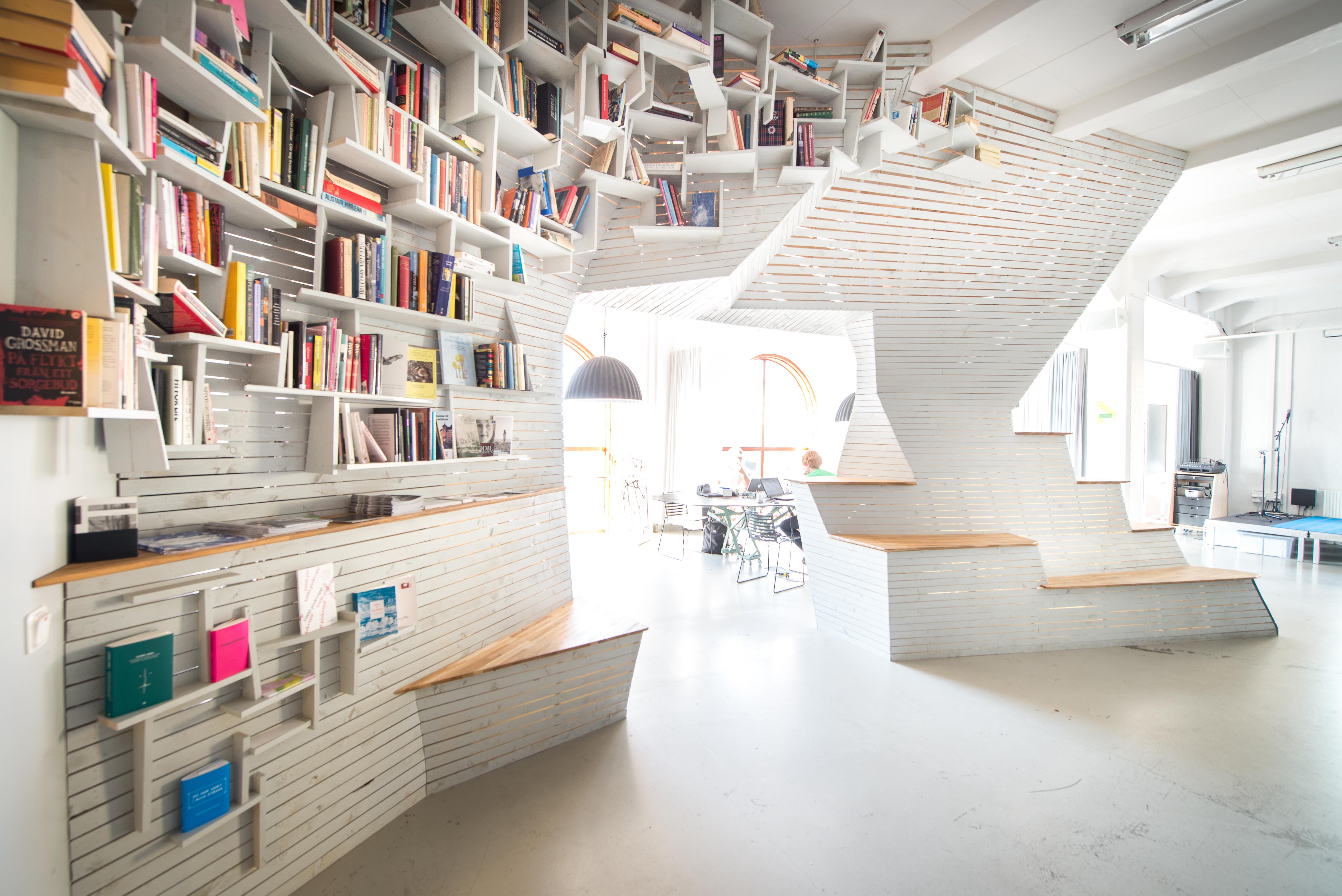
The interior of the Gothenburg House of Literature was conceived of as one large bookshelf. The idea was to build something which could hold books as well as people, and which could extend to comprise a landscape which could host the venues frequent talks and seminars.
The intricate patterns of the bookshelf was constructed to replace a alphabetical sorting of books and replace it with one which instead relied on pattern recognition, where every book had a unique location within a greater structure of shelves and angles. The idea is that this complexity will lend itself both to a more unpredictable/stimulating environment, and also change the way that people will find, access, and recall where the books are. The bookshelf extends downwards to the seating spaces to allow the structure to near the body, and at the same time, allow the placement of stories, whether in the form of pages, or people. The synergy between the two would create a living library of sorts.
The intricate patterns of the bookshelf was constructed to replace a alphabetical sorting of books and replace it with one which instead relied on pattern recognition, where every book had a unique location within a greater structure of shelves and angles. The idea is that this complexity will lend itself both to a more unpredictable/stimulating environment, and also change the way that people will find, access, and recall where the books are. The bookshelf extends downwards to the seating spaces to allow the structure to near the body, and at the same time, allow the placement of stories, whether in the form of pages, or people. The synergy between the two would create a living library of sorts.
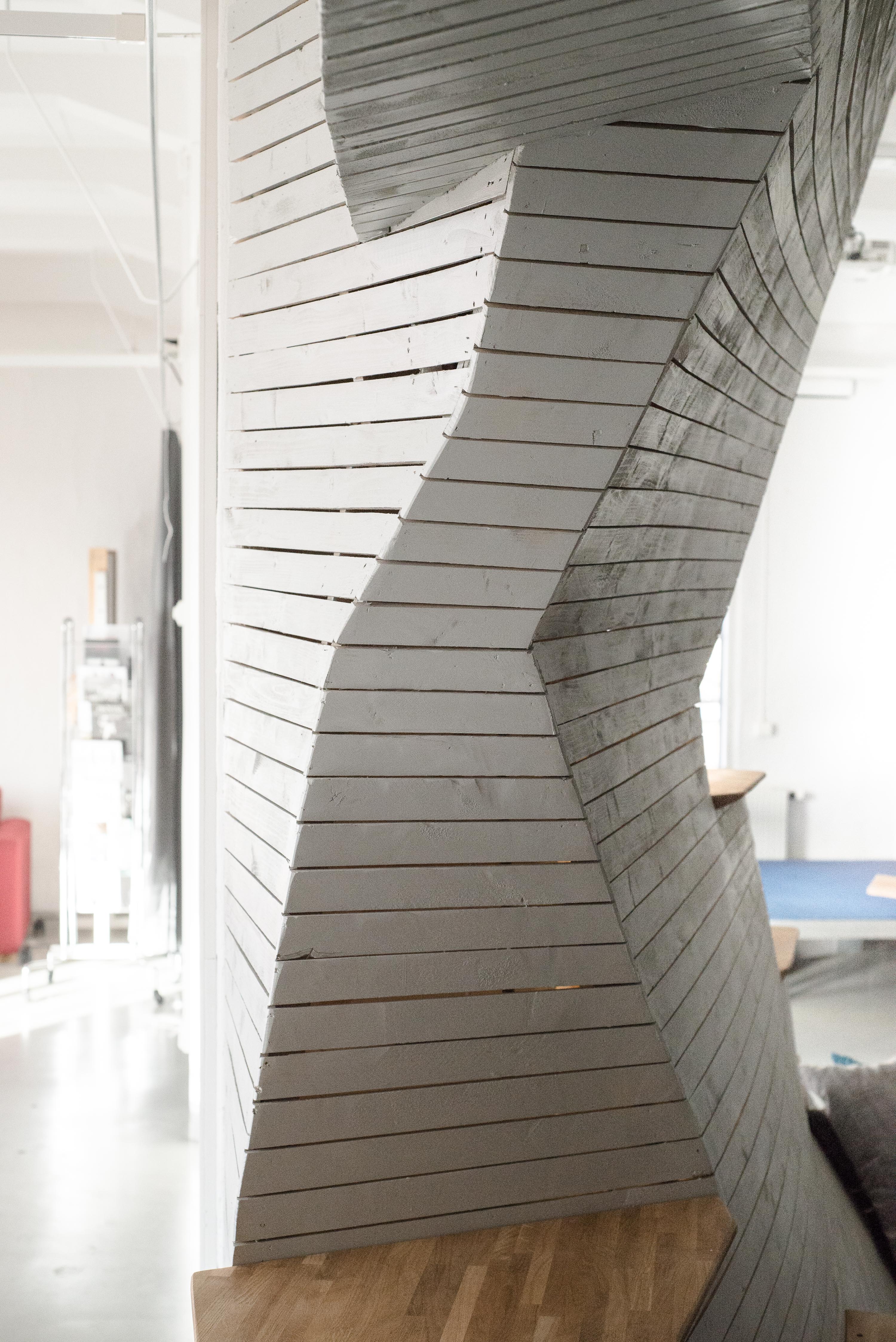
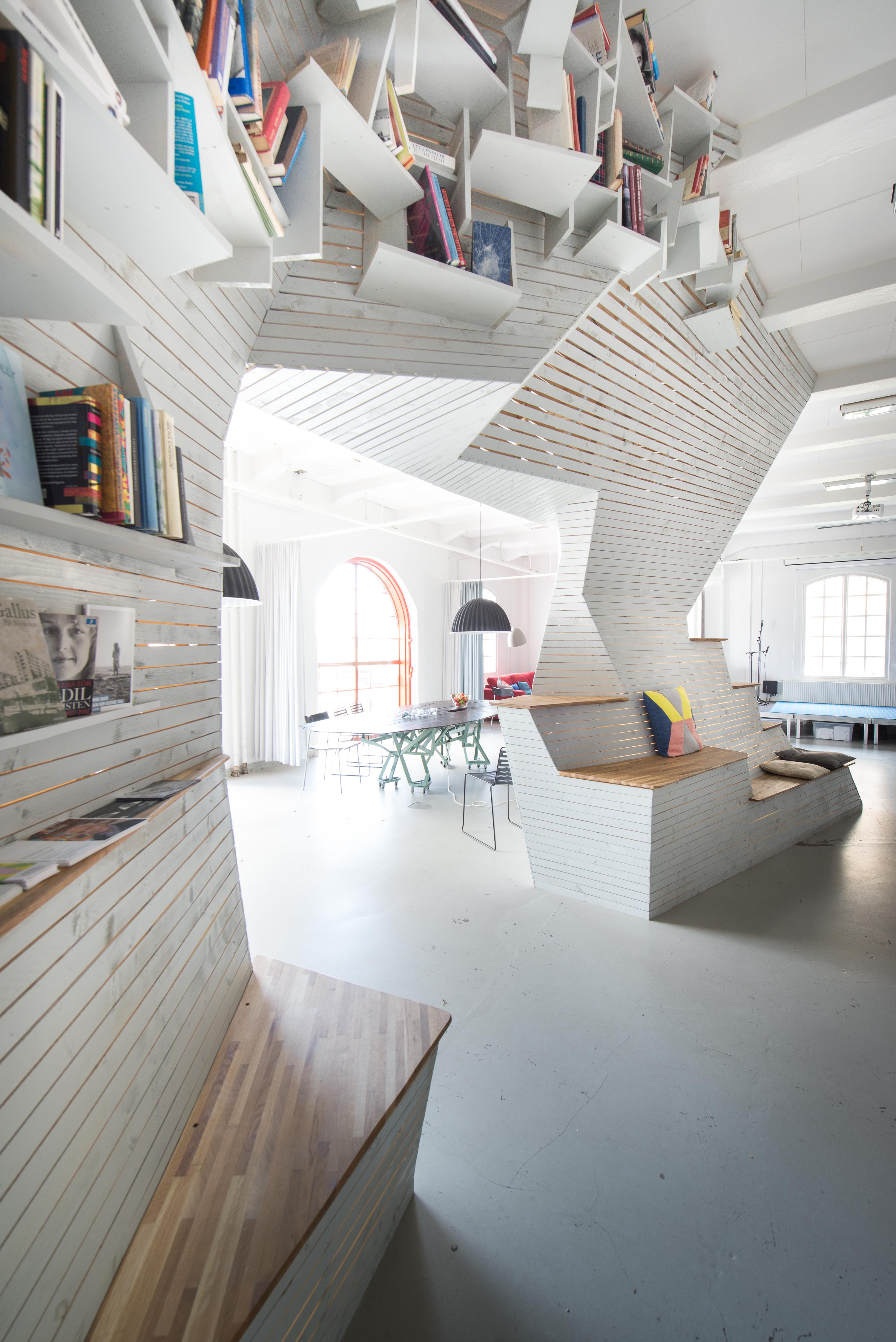
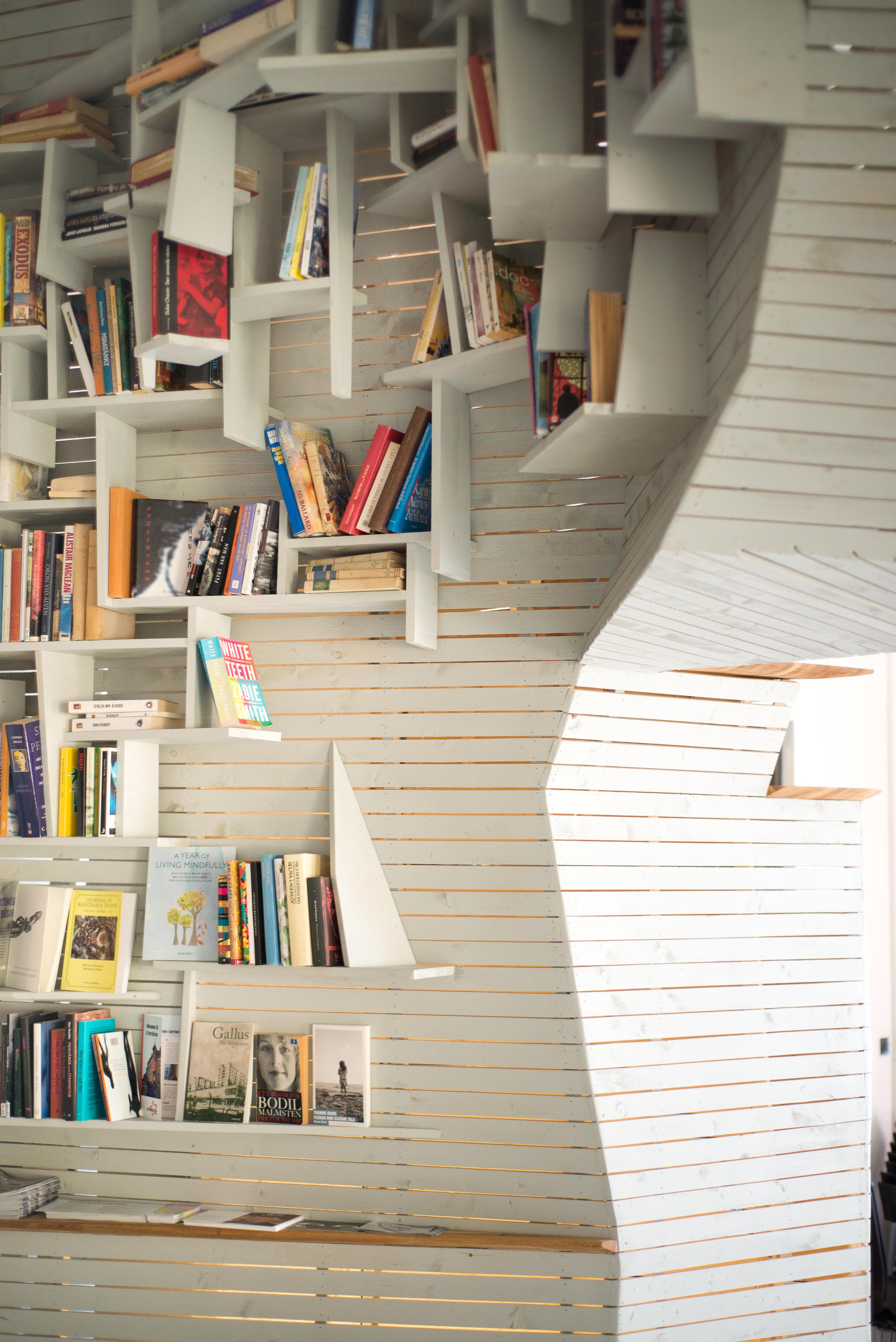
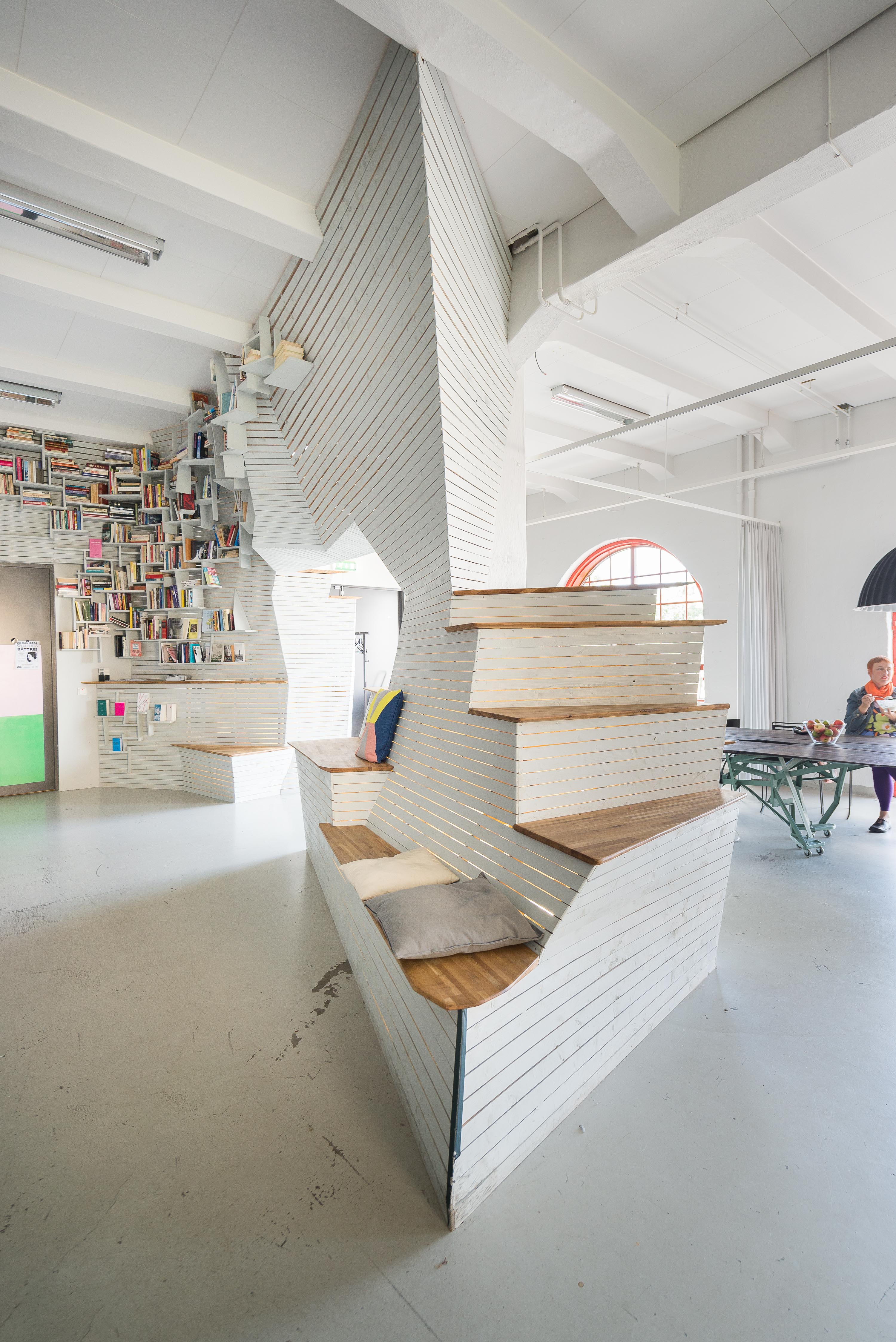
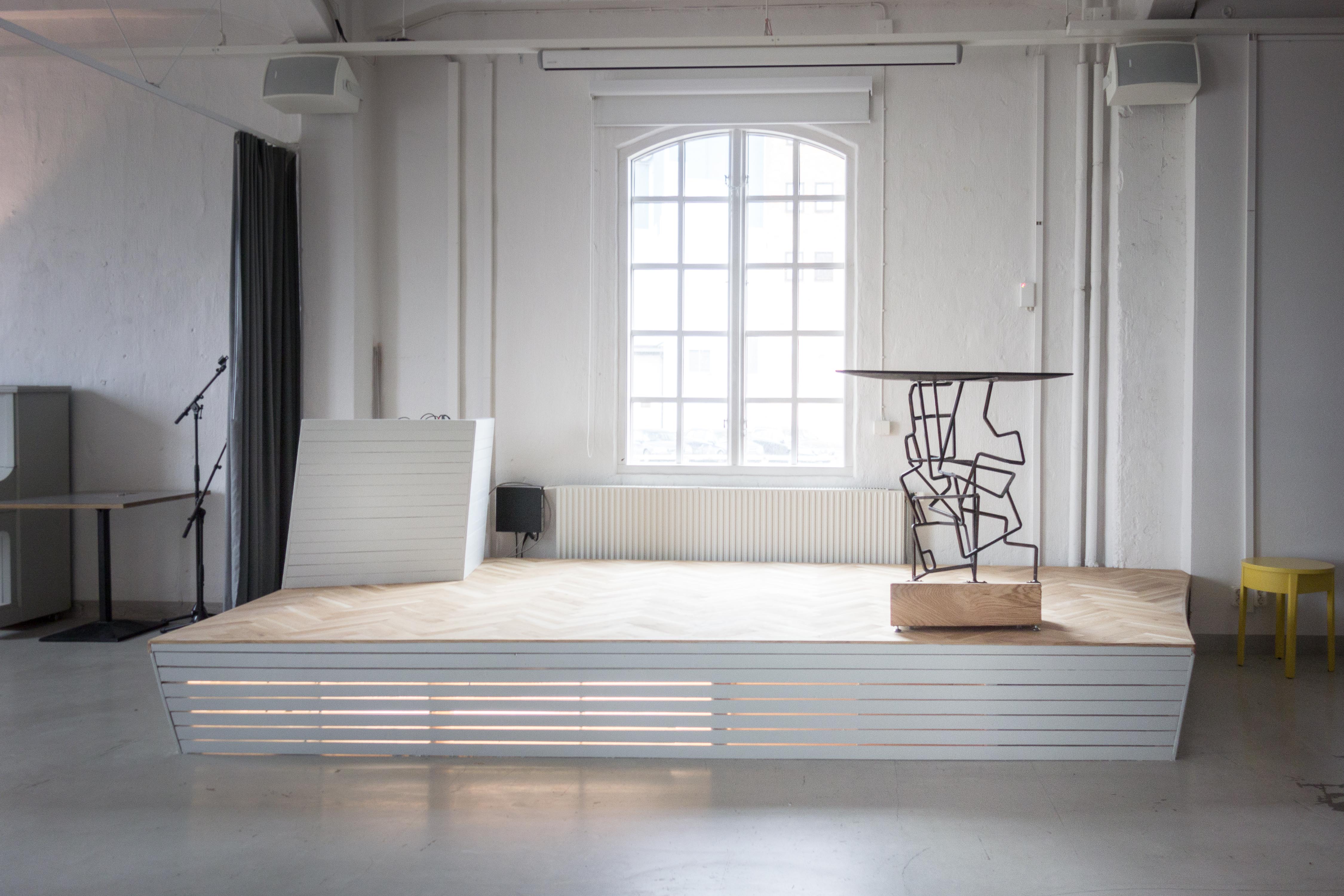
Within this landscape there are mobile elements. There is a conference table on wheels, which is appears fragmented, like a puzzle. How can a table mimic discussion? Dialogue contains perspective which interlocks and vies for position while at the same time allowing & embrace differences.
There is also a layered elm bar table held up by shards of steel which have been weathered and dragged through gravel in order to complement the grit and character of those people who might find themselves standing at the bar. The mingle tables are made from two 6m steel rods which folds and interlock, and are thought to grow out of the ground. Like mingle, they are not meant to be fully stable, having a slight feathering which at the same time is an asymmetrical and unpredictable movement.
The signs leading into the building are also supposed to mimic body language and direct attention as much in their form as their content.
There is also a layered elm bar table held up by shards of steel which have been weathered and dragged through gravel in order to complement the grit and character of those people who might find themselves standing at the bar. The mingle tables are made from two 6m steel rods which folds and interlock, and are thought to grow out of the ground. Like mingle, they are not meant to be fully stable, having a slight feathering which at the same time is an asymmetrical and unpredictable movement.
The signs leading into the building are also supposed to mimic body language and direct attention as much in their form as their content.
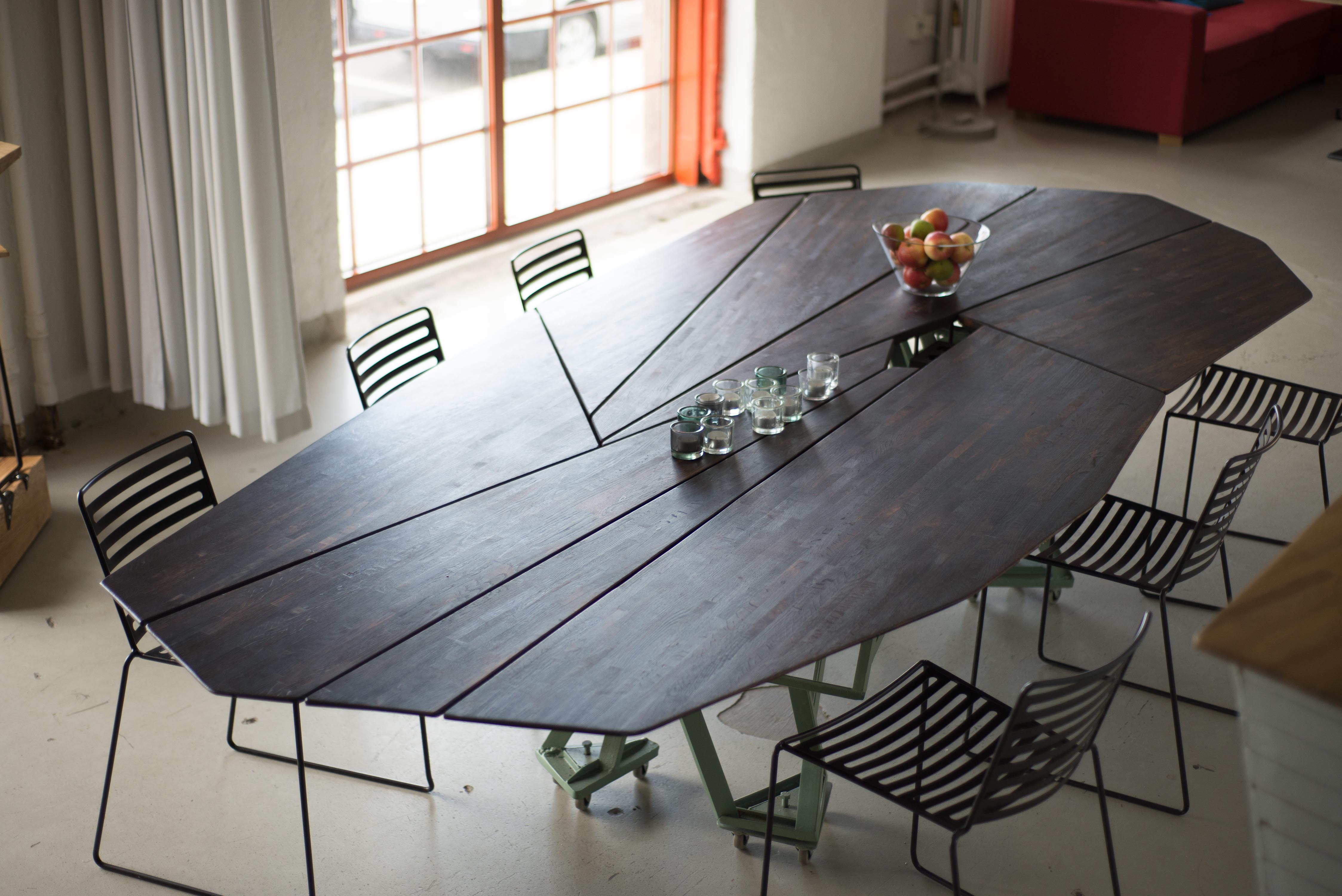
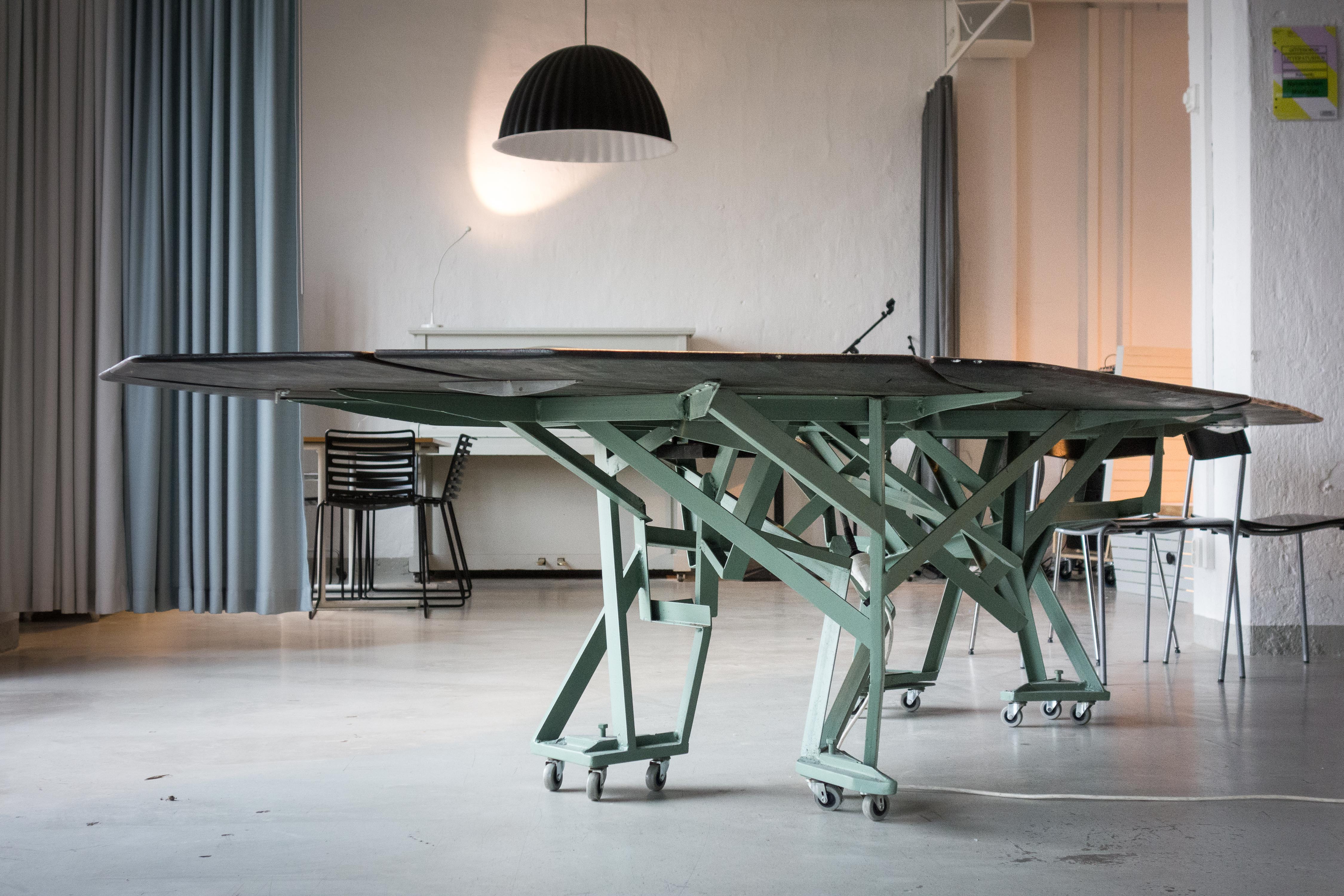
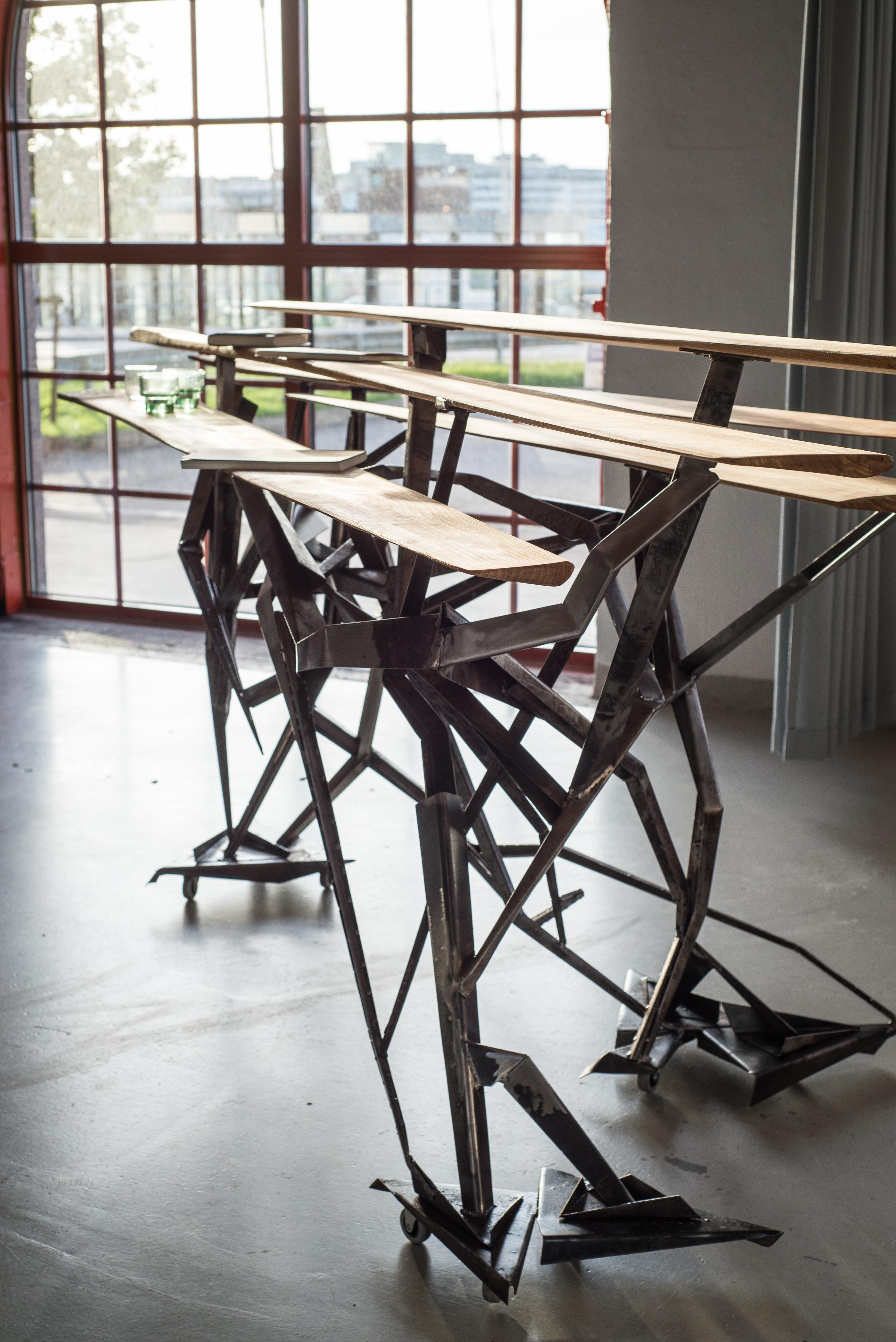
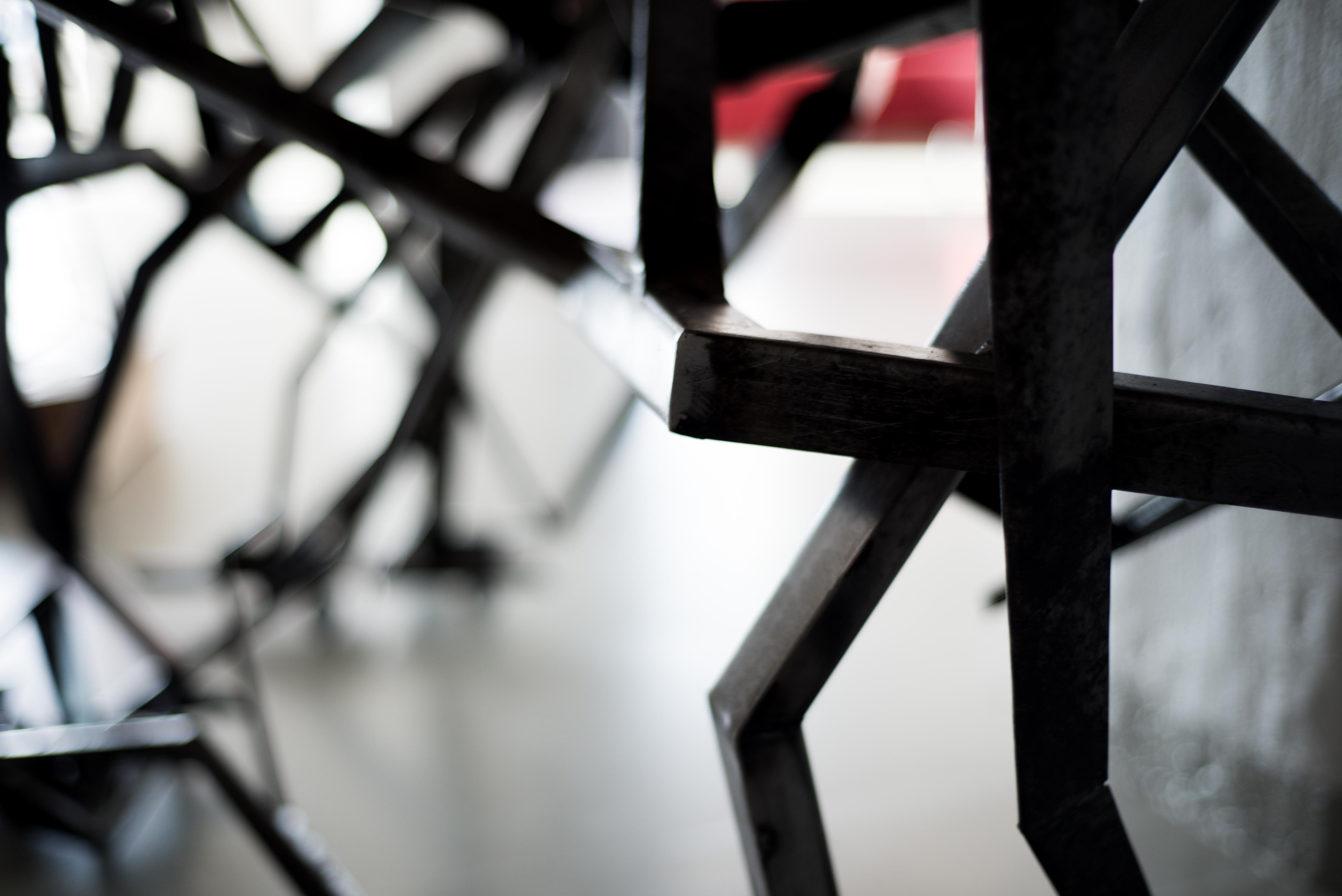
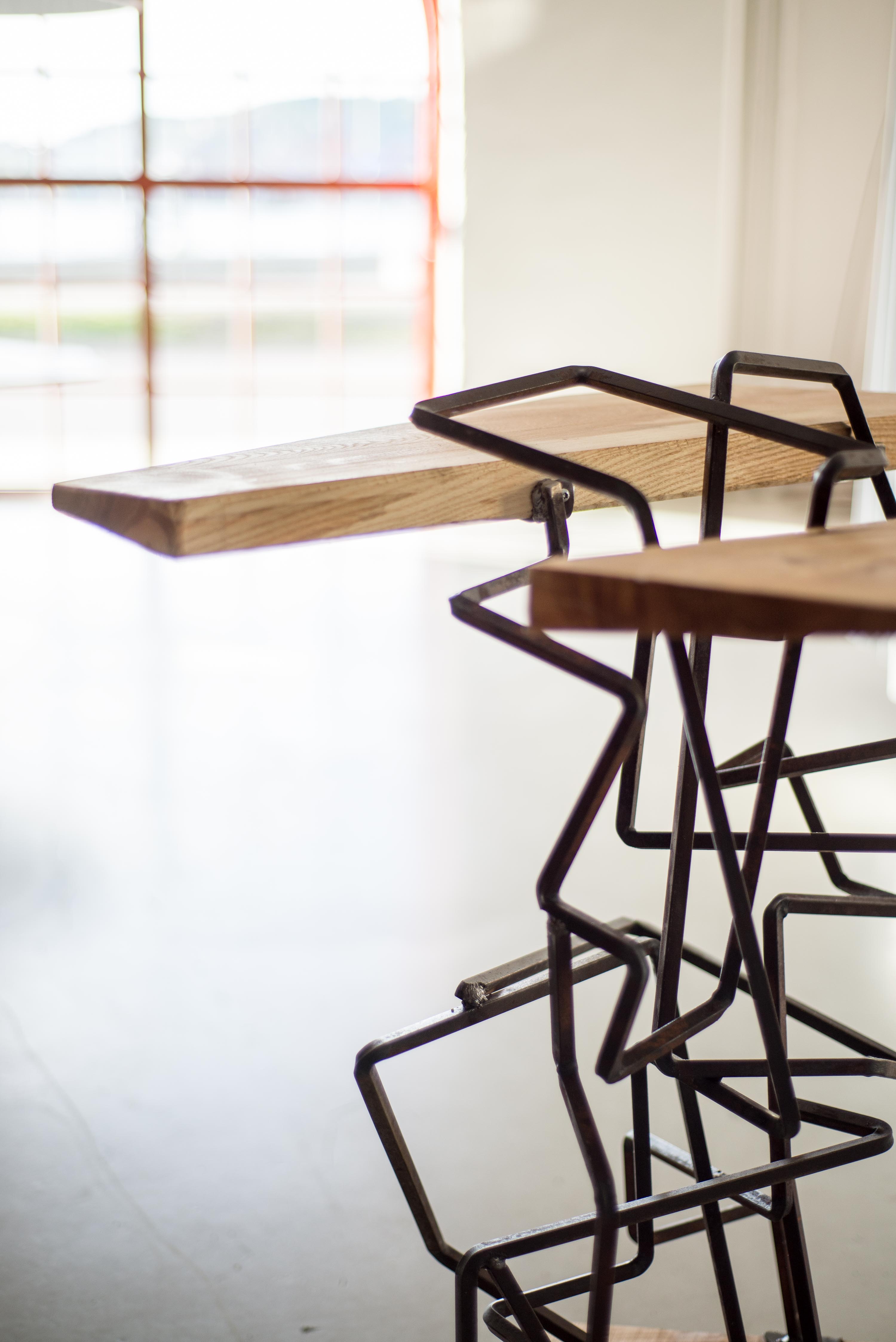

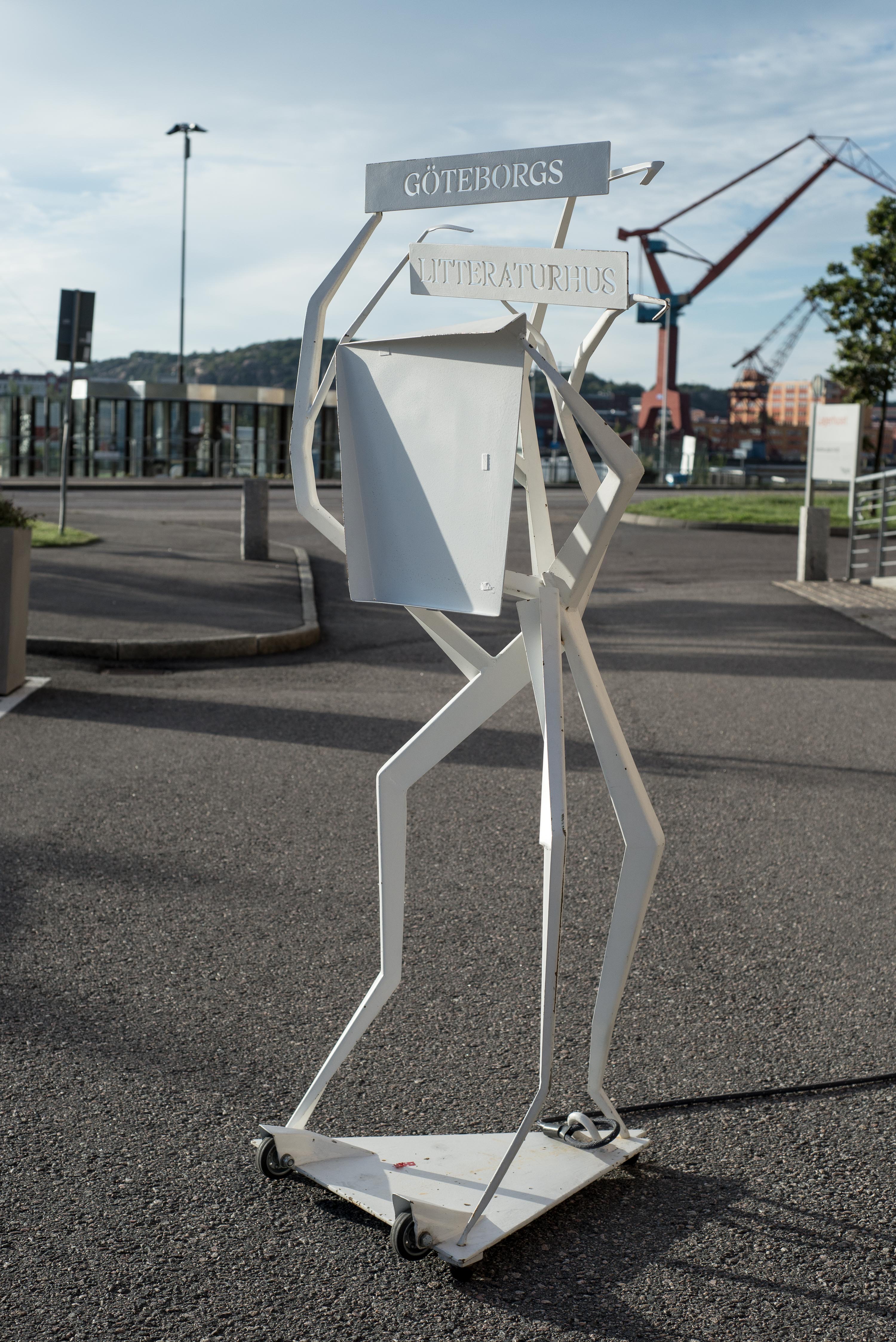

Images: David Relan / Torsten Imottesjo